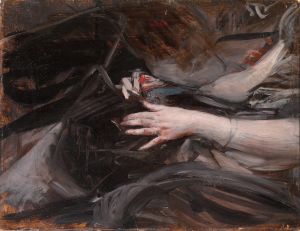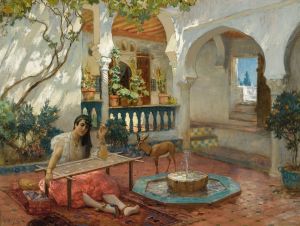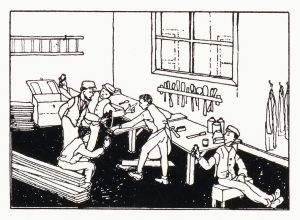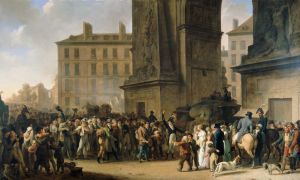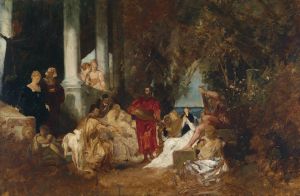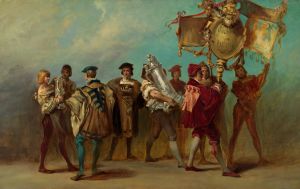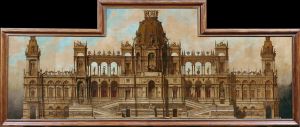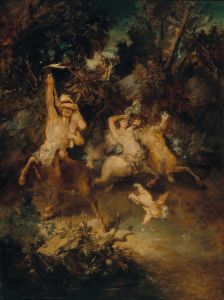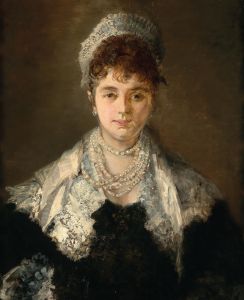
Entwurf zum Festzug 1879 – Die Zimmerleute
A hand-painted replica of Hans Makart’s masterpiece Entwurf zum Festzug 1879 – Die Zimmerleute, meticulously crafted by professional artists to capture the true essence of the original. Each piece is created with museum-quality canvas and rare mineral pigments, carefully painted by experienced artists with delicate brushstrokes and rich, layered colors to perfectly recreate the texture of the original artwork. Unlike machine-printed reproductions, this hand-painted version brings the painting to life, infused with the artist’s emotions and skill in every stroke. Whether for personal collection or home decoration, it instantly elevates the artistic atmosphere of any space.
"Entwurf zum Festzug 1879 – Die Zimmerleute" (Design for the Parade 1879 – The Carpenters) is a painting by the Austrian artist Hans Makart. Makart, born on May 28, 1840, in Salzburg, was a renowned 19th-century painter and designer, known for his historical and allegorical works. He became a central figure in the Vienna art scene during the latter half of the 19th century, influencing the city's cultural landscape significantly.
The painting "Entwurf zum Festzug 1879 – Die Zimmerleute" was created as part of Makart's designs for the grand parade held in Vienna in 1879. This parade was organized to celebrate the silver wedding anniversary of Emperor Franz Joseph I and Empress Elisabeth of Austria. The event was a significant cultural and social occasion, reflecting the grandeur and ceremonial splendor of the Austro-Hungarian Empire.
Makart was commissioned to design the decorations and floats for the parade, and his work included a series of paintings and sketches that depicted various trades and guilds. "Die Zimmerleute" (The Carpenters) is one of these designs, showcasing the carpenters' guild. The painting captures the essence of the trade, highlighting the skill and craftsmanship of the carpenters.
In "Die Zimmerleute," Makart employs his characteristic style, which is marked by vibrant colors, dynamic compositions, and a keen attention to detail. The painting features a group of carpenters engaged in their work, surrounded by tools and materials. The figures are depicted with a sense of movement and purpose, emphasizing the industrious nature of their trade. Makart's use of light and shadow adds depth and dimension to the scene, creating a vivid and lively portrayal of the carpenters at work.
Hans Makart's contribution to the 1879 parade was highly praised, and his designs were celebrated for their artistic excellence and imaginative vision. The parade itself was a grand spectacle, with elaborate floats and decorations that showcased the cultural and artistic achievements of the empire. Makart's work played a crucial role in the success of the event, cementing his reputation as one of the leading artists of his time.
Makart's influence extended beyond his paintings and designs; he was also a prominent figure in the Vienna art world, mentoring younger artists and shaping the direction of Austrian art. His studio became a hub of artistic activity, attracting students and admirers from across Europe. Makart's legacy is evident in the works of subsequent generations of artists, who were inspired by his innovative approach and commitment to artistic excellence.
"Entwurf zum Festzug 1879 – Die Zimmerleute" remains an important example of Makart's work, reflecting his ability to combine historical themes with a contemporary sensibility. The painting is a testament to his skill as an artist and his contribution to the cultural heritage of Austria. Today, Makart's works are held in various museums and collections, where they continue to be appreciated for their artistic and historical significance.





